Past Members
Rauno Alatalo
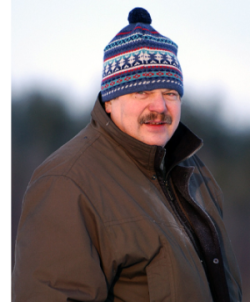 Rauno Alatalo has been one of the most preeminent behavioural ecologists of the last 30 years. He studied biology at the University of Oulu, where he earned bachelor's and MSc degrees. He conducted his Ph.D. at Uppsala. Duiring his time at Uppsala he was awarded a British Council scholarship to Edward Grey Instititute of Field Ornithology and Wolfson College, Oxford University (1979 -1980).
Rauno Alatalo has been one of the most preeminent behavioural ecologists of the last 30 years. He studied biology at the University of Oulu, where he earned bachelor's and MSc degrees. He conducted his Ph.D. at Uppsala. Duiring his time at Uppsala he was awarded a British Council scholarship to Edward Grey Instititute of Field Ornithology and Wolfson College, Oxford University (1979 -1980).
Rauno was an Assistant Professor at the University of Stockholm (1981) and Uppalsa (1982-1985), before joining the University of Jyväskylä in 1986, where he rose through the academic ranks to become a University Biological and Environmental Sciences professor in 1994. In 1997 and again in 2002, he received a prestigious five-year Academy of Finland Professorship. Rauno was forced to retire early through ill health in 2008. During his career, Rauno was supervisor to 24 PhD students and many of the scientists working in Scandinavian universities today are students of his.
Rauno's research spanned many areas in ecology and evolutionary biology, but particularly mating systems and mate choice. As well as his most famous work on black grouse which continues to this day, he also carried out research on several other bird species including pied flycatchers and invertebrates such as wolf spiders Hygrolycosa rubrofasciata.

Rauno served in numerous positions of trust. He was president of the Scandinavian Ornithological Union (1991-1993), a councillor for the International Society for Behavioral Ecology (1994-1998), the European Society of Evolutionary Biology (1999-2003) and Association for the Study of Animal Behaviour (2002-2004). He also served as an editor of Journal of Avian Biology (1993-1996) and as an editorial board member for Behavioral Ecology (1995-2000). He was also a key organizer of the 10th International Society for Behavioral Ecology Congress at Jyväskylä (July 2005).
Rauno's eminence in science has long been recognised. He was listed among 49 young biologists as "Europe's Rising Star in Biology" and was Professor of the Year 2001 in Finland. With his retirement in 2008 due to ill health, the world of behavioural ecology lost one of its most important scientists.
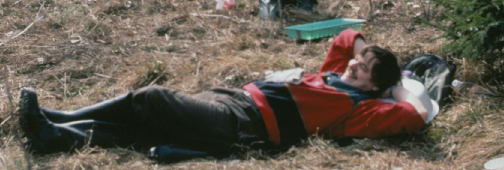
Gilbert Ludwig
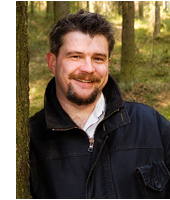 My scientific research interest focuses on the study of patterns and
processes underlying the evolution and dynamics of wild populations and
communities, especially in the perspective of environmental and climatic
change, at different spatial, temporal and hierarchical scales. My studies
generally involve a mixture of empirical field studies, time-series
modeling of very large datasets as well as theoretical investigations.
Currently, I am particularly interested in the impact of large carnivore
reinvasion (Eurasian Lynx) as well as climate change upon population
dynamics and community structure in Finnish forest ecosystems as well as
its evolutionary consequences on several key species (e.g. Forest Grouse,
Mesopredators).
My scientific research interest focuses on the study of patterns and
processes underlying the evolution and dynamics of wild populations and
communities, especially in the perspective of environmental and climatic
change, at different spatial, temporal and hierarchical scales. My studies
generally involve a mixture of empirical field studies, time-series
modeling of very large datasets as well as theoretical investigations.
Currently, I am particularly interested in the impact of large carnivore
reinvasion (Eurasian Lynx) as well as climate change upon population
dynamics and community structure in Finnish forest ecosystems as well as
its evolutionary consequences on several key species (e.g. Forest Grouse,
Mesopredators).
Anssi Lipponen
 I started to work on the black grouse project in summer 2005 as a trainee and a year later I started to my BSc thesis on magpie (Pica pica) microsatellites. Afterwards I have been working in the project as a laboratory technician, measuring several physiological and genetic factors, as well as familiarising trainees and visiting researchers to laboratory measurements. In 2011, I finished my MSc studies and thesis in the black grouse project, where I developed a nested qPCR technique to measure blood parasite loads. Recently I have become interested in applying molecular biology to ecological research and from 2012 onwards I am starting my PhD focusing on the relationships between genetics, immune function and individual life histories. To study genetic factors affecting black grouse's parasite resistance and immunity I will utilise recent advances in molecular techniques such as qPCR and next generation sequencing (NGS). I am aim to study length and attrition rates of telomere classes I, II and III and how these are affecting black grouse immunity, variation of parasite resistance in different age groups and effects of genetic inheritance on parasite resistance
I started to work on the black grouse project in summer 2005 as a trainee and a year later I started to my BSc thesis on magpie (Pica pica) microsatellites. Afterwards I have been working in the project as a laboratory technician, measuring several physiological and genetic factors, as well as familiarising trainees and visiting researchers to laboratory measurements. In 2011, I finished my MSc studies and thesis in the black grouse project, where I developed a nested qPCR technique to measure blood parasite loads. Recently I have become interested in applying molecular biology to ecological research and from 2012 onwards I am starting my PhD focusing on the relationships between genetics, immune function and individual life histories. To study genetic factors affecting black grouse's parasite resistance and immunity I will utilise recent advances in molecular techniques such as qPCR and next generation sequencing (NGS). I am aim to study length and attrition rates of telomere classes I, II and III and how these are affecting black grouse immunity, variation of parasite resistance in different age groups and effects of genetic inheritance on parasite resistance
Miina Pekkola
Kaisa Rokka
 I have always been fascinated by nature and the peculiarities of animal behavior. These interests brought me to study biology in University of Jyväskylä. For my master's thesis I studied maternal effects on personality in magpies. After graduation in 2008, I started working as a PhD student in the black grouse project. I'm interested in the various ways parasites affect their host species and in the interplay of parasites and their hosts. Specifically I'm studying blood parasites (Haemoproteus spp., Plasmodium spp., Leucocytozoon spp.) which are widely distributed and common parasites of birds. One key aspect of these parasites is that they are vector transmitted (e.g. by mosquitoes), as is the sindbis-virus, another part of my study. Sindbis-virus is a zoonosis causing Pogosta disease in humans. Although sindbis-virus has been found in birds almost globally, Pogosta disease in humans is restricted to Northern Europe. I study how these parasites are distributed in our study population of black grouse. I'm looking into environmental (year, site) and individual characteristics, such as age and sex, that may influence parasite infection probabilities. I also study effects of these parasites on breeding success and survival of black grouse females.
I have always been fascinated by nature and the peculiarities of animal behavior. These interests brought me to study biology in University of Jyväskylä. For my master's thesis I studied maternal effects on personality in magpies. After graduation in 2008, I started working as a PhD student in the black grouse project. I'm interested in the various ways parasites affect their host species and in the interplay of parasites and their hosts. Specifically I'm studying blood parasites (Haemoproteus spp., Plasmodium spp., Leucocytozoon spp.) which are widely distributed and common parasites of birds. One key aspect of these parasites is that they are vector transmitted (e.g. by mosquitoes), as is the sindbis-virus, another part of my study. Sindbis-virus is a zoonosis causing Pogosta disease in humans. Although sindbis-virus has been found in birds almost globally, Pogosta disease in humans is restricted to Northern Europe. I study how these parasites are distributed in our study population of black grouse. I'm looking into environmental (year, site) and individual characteristics, such as age and sex, that may influence parasite infection probabilities. I also study effects of these parasites on breeding success and survival of black grouse females.
Vincent Staszewski
 Something will be added here.....one day.
Something will be added here.....one day.
Marjo Pihlaja
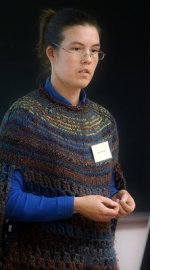 Something will be added here.....one day.
Something will be added here.....one day.
Natalia Pitalia
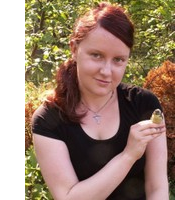 Something will be added here.....one day.
Something will be added here.....one day.


